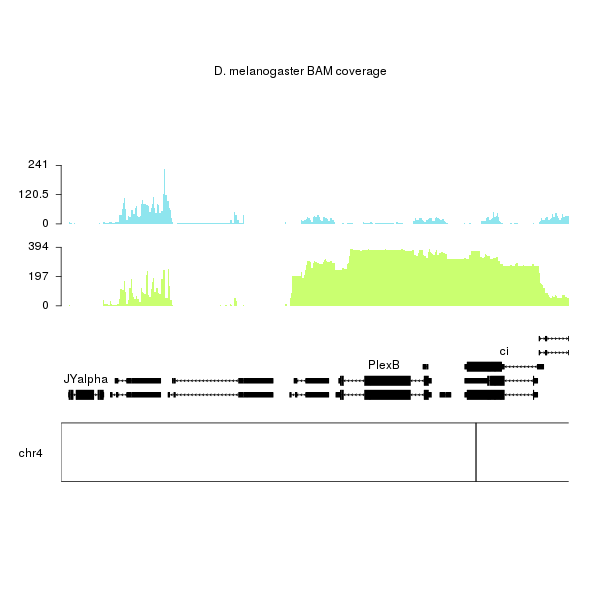Dear all, I am trying to visualize my chip-seq data in r.(visualizing peak and gene annotation in r) I followed the whole process according to "ChIP-seq analysis basics(Aleksandra P ekowska, Simon Anders)" and there were some problems using BiomartGeneRegionTrack function.
Here is the code I'm using.
library(BSgenome)
library(BSgenome.Dmelanogaster.UCSC.dm6)
library(cluster.datasets)
genome <- BSgenome.Dmelanogaster.UCSC.dm6
si = seqinfo(genome)
si[c("chr2L", "chr2R")]
I tried to visualize a region on the D.melanogaster chromosome(genome dm6) so I changed some code for my data.
library(ShortRead)
library(Gviz)
library(xfun) # have some problems
library(biomaRt)
mart = useMart(biomart = "ENSEMBL_MART_ENSEMBL",
dataset = "dmelanogaster_gene_ensembl",
host = "www.ensembl.org") # I didn't include this in 'bm' - I am not sure I can use this ensembl for UCSC genome
fm = Gviz:::.getBMFeatureMap()
fm["symbol"] = "external_gene_id"
bm = BiomartGeneRegionTrack(chromosome = "chr2L", genome = "BDGP6.22",
start = 1009600, end = 1016000,
filter = list("with_ox_refseq_mrna"=T),
size = 4, name = "RefSeq", utr5 = "red3", utr3 = "red3",
protein_coding = "black", col.line = NULL, cex = 7,
featureMap = fm)
Error in .genome2Dataset(genome) :
Unable to automatically determine Biomart data set for UCSC genome identifier 'BDGP6.22'.
Please manually provide biomaRt object
This "BiomartGeneRegionTrack" has some problems, but I don't know why. If anyone knows how to solve this problem, please help me.
Thanks in advance!


